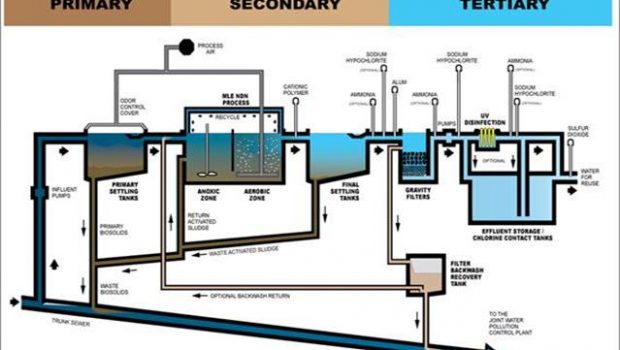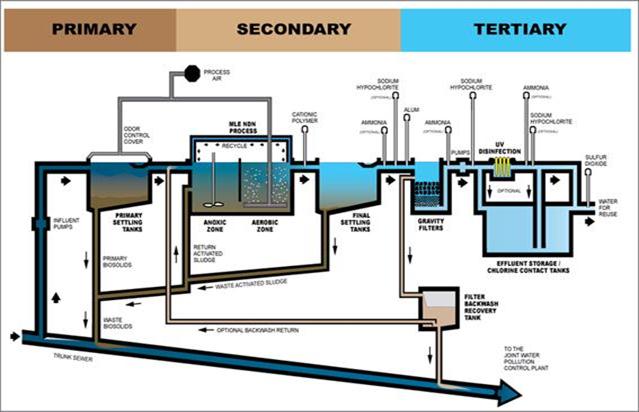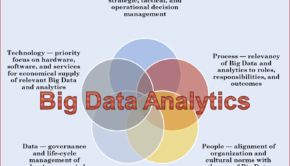Wastewater to Drinking Water: A Necessary Process
To some, the words ‘reclaimed water’ are enough to turn the stomach. Though perhaps not at all appealing to hear, filtering and reusing wastewater is one of the most promising new tactics that can be employed by municipalities the world over to promote sustainability and combat water shortages—shortages that are not only the result of increasingly erratic weather phenomenon, but also the result of rising population dwateensities in urban areas.
As ingenious as water reclamation projects are, they are by no means the only tool used to mitigate water supply deficiencies.
How Cities Cope With Water Shortages
Water shortages can be scary; not only do they represent a scarcity of a resource that is vital to sustaining human life, they also jeopardize the process of raising livestock, growing crops, and put at risk the health of nearly every ecosystem on earth.
While these reasons alone are not the only factors considered by local governments when evaluating their need to preserve their water supply, they are often viewed as enough of a justification for an investment in a comprehensive water management system.
Whatever shape or form a city’s water management system takes on, a good system invariably starts with the installation of proactive technologies—technologies that provide the ability to monitor the integrity of the system, in real time. Monitoring the reliability of a system is accomplished easily enough through the use of sensors. Naturally, these come in a wide range of styles, from wireless acoustic sensors to manually deployed tethered sensors. The former, which are generally mounted on a system’s external fixtures like hydrants, valves and water mains, use inaudible pulses to search for anomalies in a pipeline’s material, anomalies that could be indicative of decay.
Since most of the pipes that transport water from the plant to the homes of residents are buried beneath the ground, high-end sensors in many cases provide a first line of defense in infrastructure integrity and water main leak detection.
Leak detection technology aside, a city’s geographical location can play a primary role in determining the type of plant used to supply a region with clean drinking water.
Cities that are located in close proximity to the ocean for example, are investing more and more in desalination technology to turn salt water into fresh water. While desalination processes may vary from plant to plant (one may employ multi-flash distillation to separate the water from the salt using heat, while another may use a reverse osmosis desalination process), both are considered to be very energy intensive processes. Currently, the energy requirements of such technology make it cost prohibitive in many areas.
A large number of cities rely on surface water to supply them with water. Less frequently, cities are forced to rely upon pulling groundwater to the surface. Unfortunately, pulling groundwater is not always sustainable in the long term—and that’s where a system that incorporates a water reclamation process can be particularly useful. Ideally, this type of system draws groundwater and treats it. Once consumed, it is treated a second time before it is returned to the underground aquifer from where it originated. Though the treated water is perfectly safe for drinking, it is returned underground as a means of ensuring sustainability.
When it comes to using wastewater to produce drinking water, there is understandably a great deal of skepticism from the general public—a hesitation that is not surprising given the number of news reports citing contaminated water. Treatment plants often take extra steps when it comes to treating wastewater, including passing the water through a microfiltration process then subjecting it to ultraviolet light as a final step to remove all viruses, parasites, and other microscopic detritus.
While the future may hold many uncertainties in terms of weather, droughts, and precipitation, it is imperative that we develop the kind of technology today to prepare for the worst-case scenario of tomorrow. Fortunately, we are already making great strides in developing efficiencies in water use from an irrigation and agriculture perspective (believe it or not, agriculture accounts for nearly 70% of the water that’s consumed) and with the advances in wastewater treatment and the gradually increasing frequency desalination facilities, it would seem as though our water woes may one day be a thing of the past.
















